Reduced radiation background does not affect complex organisms
News, 13 August 2021
Molecular Genetic Research at the Baksan Neutrino Observatory allows a new look at the effect of ultralow radiation doses
For the first time in Russia, biological investigations into the effect of a low radiation background on complex model organisms have been carried out under the unique conditions of the low-background laboratory of the Baksan Neutrino Observatory (INR, RAS). The model was the fruit fly Drosophila melanogaster, a classic object for genetic research. The experiment showed that the low radiation background did not produce any effect on this model organism.
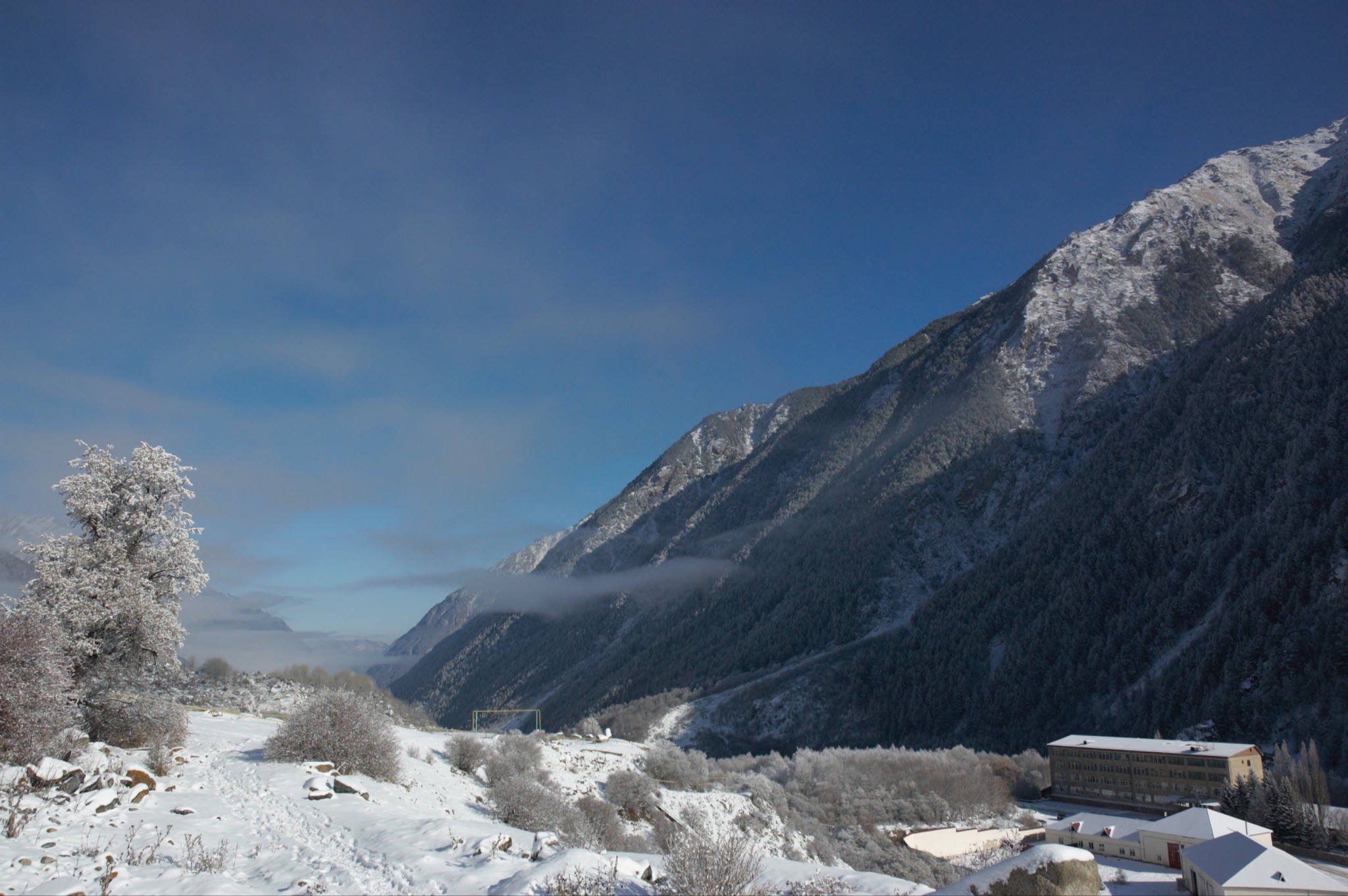 Building of the Baksan Neutrino Observatory, INR, RAS, at the foot of Andyrchi Mountain in the village of Neutrino. Photo by Mikhail Zarubin
Building of the Baksan Neutrino Observatory, INR, RAS, at the foot of Andyrchi Mountain in the village of Neutrino. Photo by Mikhail Zarubin
At the beginning of August 2021 a paper was published in PLoS ONE by the scientists from the international scientific organization Joint Institute for Nuclear Research (JINR, Dubna) and the Baksan Neutrino Observatory (BNO) of the Institute for Nuclear Research of the Russian Academy of Sciences (INR, RAS, Moscow), reporting Russia’s first biological investigations performed in the unique DULB-4900 underground low-background laboratory at the BNO. The objective was to find out how a decrease in the radiation background affects complex model organisms. Interest in this kind of research arises from that inferences proving both the positive and the negative effect of the low radiation background can be found in the scientific literature. So far, these inferences have been based on the analysis of individual traits or genes, which led to contradictions.
To get an objective picture, the JINR and BNO scientists estimated by the RNA sequencing method the changes in the activity of all 15682 genes of the fruit flies D. melanogaster that had gone through the total life cycle from the embryo to the adult organism in the underground laboratory under a low radiation background. A different gas content of the atmosphere, presence of microparticles in the air, inadequate illumination, and other factors make the organism respond by a change in the activity of genes, which can be reliably detected by modern molecular genetic methods. The control group of fruit flies lived their total life cycle at the natural radiation level under illumination, temperature, and pressure identical to those in the underground laboratory. The changes in the activity of their genes were also noted.
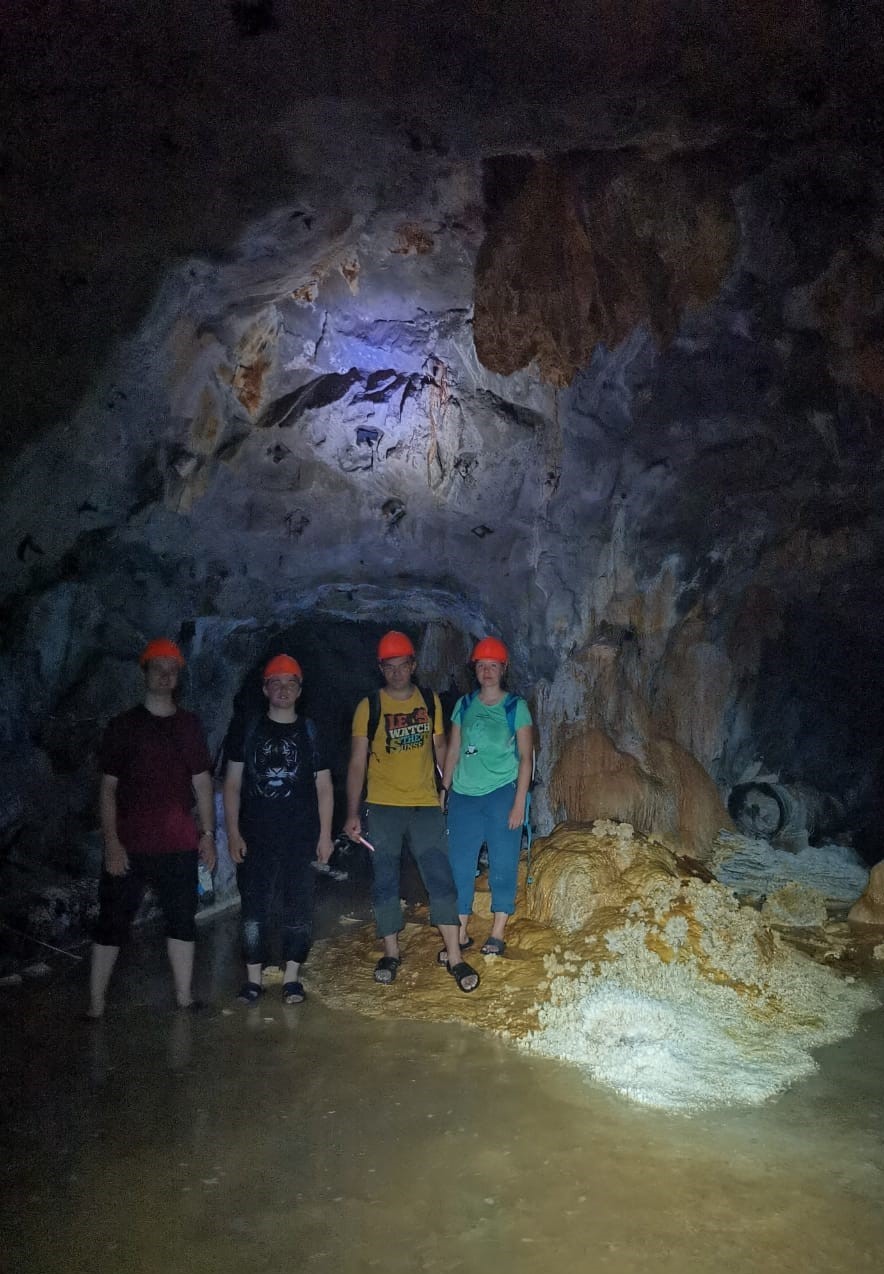 Scientists from the Sector of Molecular Genetics of DLNP, JINR, in the unused part of the BNO tunnel. Photo by Mikhail Zarubin
Scientists from the Sector of Molecular Genetics of DLNP, JINR, in the unused part of the BNO tunnel. Photo by Mikhail Zarubin
“The results of the experiments with fruit flies provide material for constructing hypotheses about humans,” says Elena Vladimirovna Kravchenko, Cand. Sci. Biology, head of the Sector of Molecular Genetics of the Dzhelepov Laboratory of Nuclear Problems (DLNP). “Human and fruit fly genotypes have a 60% common origin (homologous); 75% of genes responsible for development of diseases in humans are similar to the fruit fly genes.”
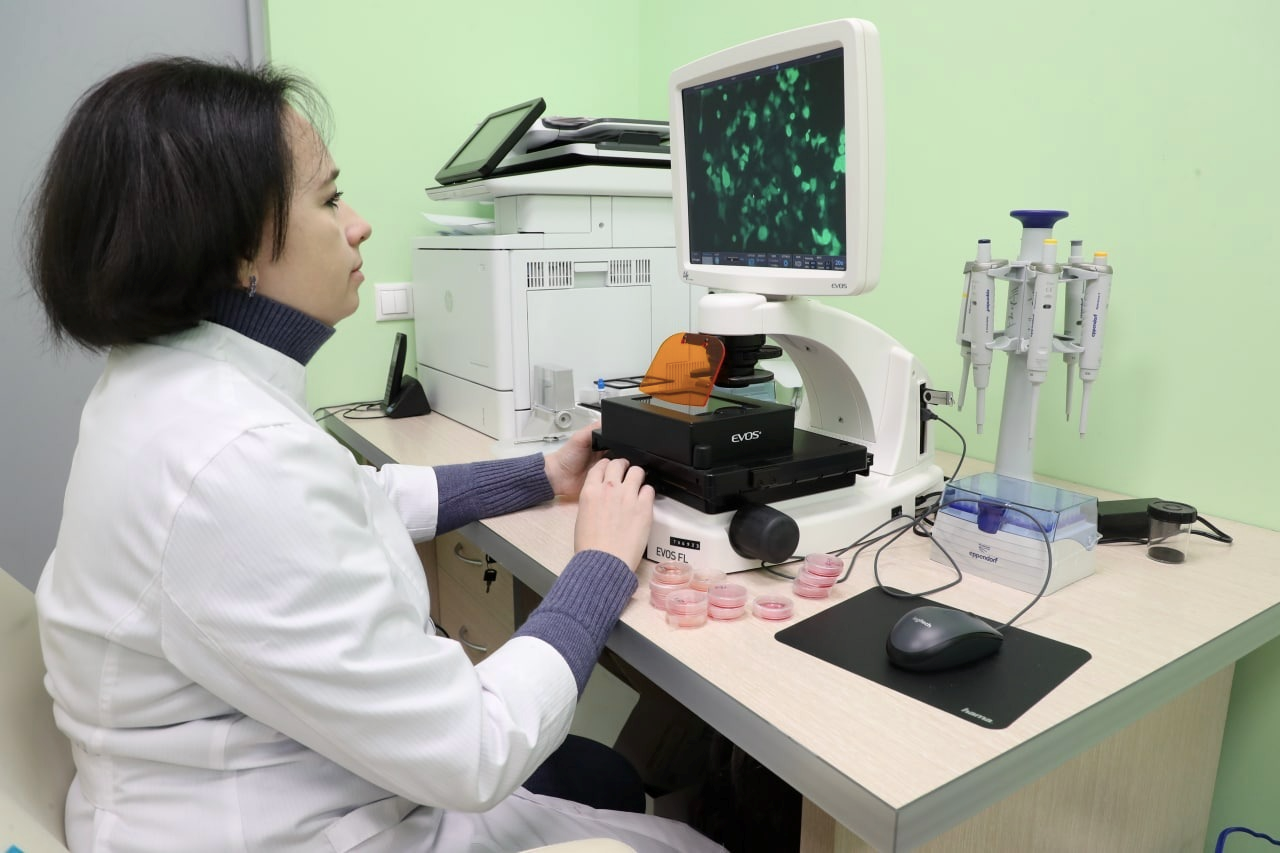 Elena Vladimirovna Kravchenko, head of the Sector of Molecular Genetics of the Dzhelepov Laboratory of Nuclear Problems, JINR, analyzes the cell culture. Photo by Igor Lapenko
Elena Vladimirovna Kravchenko, head of the Sector of Molecular Genetics of the Dzhelepov Laboratory of Nuclear Problems, JINR, analyzes the cell culture. Photo by Igor Lapenko
“The Baksan Neutron Observatory is a unique installation at a depth of about four kilometres under Andyrchi Mountain,” says a young scientist Mikhail Zarubin from the group headed by E.V. Kravchenko (DLNP, JINR). “To get to the low-background laboratory, we every morning had to travel more than three kilometres in a wagon moving through tunnel in pitch-black darkness. At the destination we were met not by belligerent gnomes or trolls but by welcoming scientists of the Institute for Nuclear Research. An unforgettable impression!”
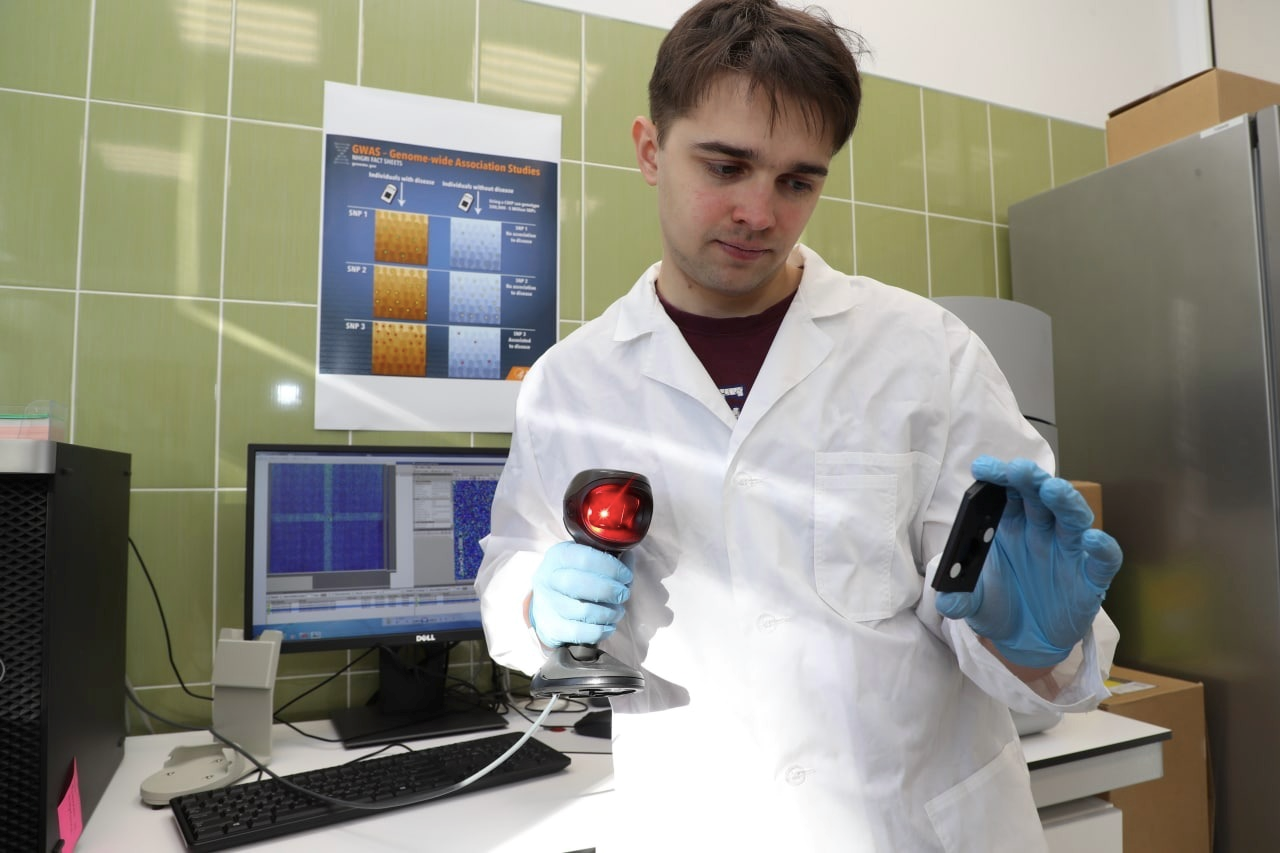 Mikhail Zarubin, a researcher of the Sector of Molecular Genetics of the Dzhelepov Laboratory of Nuclear Problems, JINR, performs the sample preparation for the transcriptomic analysis. Photo by Igor Lapenko
Mikhail Zarubin, a researcher of the Sector of Molecular Genetics of the Dzhelepov Laboratory of Nuclear Problems, JINR, performs the sample preparation for the transcriptomic analysis. Photo by Igor Lapenko
The outcome of the experiment was observation of activity changes in only 76 of 15682 genes. A detailed analysis of these 76 genes showed that the change in their activity was not related to radiation but was rather caused by the absence of natural external stimuli, such as natural odors, sounds, and vibrations, in the underground laboratory. This observation is important in view of lack of data on this kind of stress. On the basis of the experimental results, a conclusion was drawn that a lower radiation background did not produce any considerable effect, either positive or negative, on the organism.
“The results indicate that in the region of ultralow doses there is an effect threshold below which radiation does not produce a significant effect on the functioning of an organism. This is important both for estimation of radiation-related health risks and for simulation of the effect of different ionizing radiation doses on living organisms,” says E. V. Kravchenko.
“The scientific infrastructure developed for basic research in neutrino physics and astrophysics opens up fundamentally new possibilities for interdisciplinary investigations,” stresses Albert Musaevich Gangapshev, Cand. Sci. Phys. Math., science deputy head of the BNO. “The experiment jointly performed by the JINR and INR researchers has allowed solving the problem that has been discussed by biologists for some ten years. I believe this is a remarkable result!”
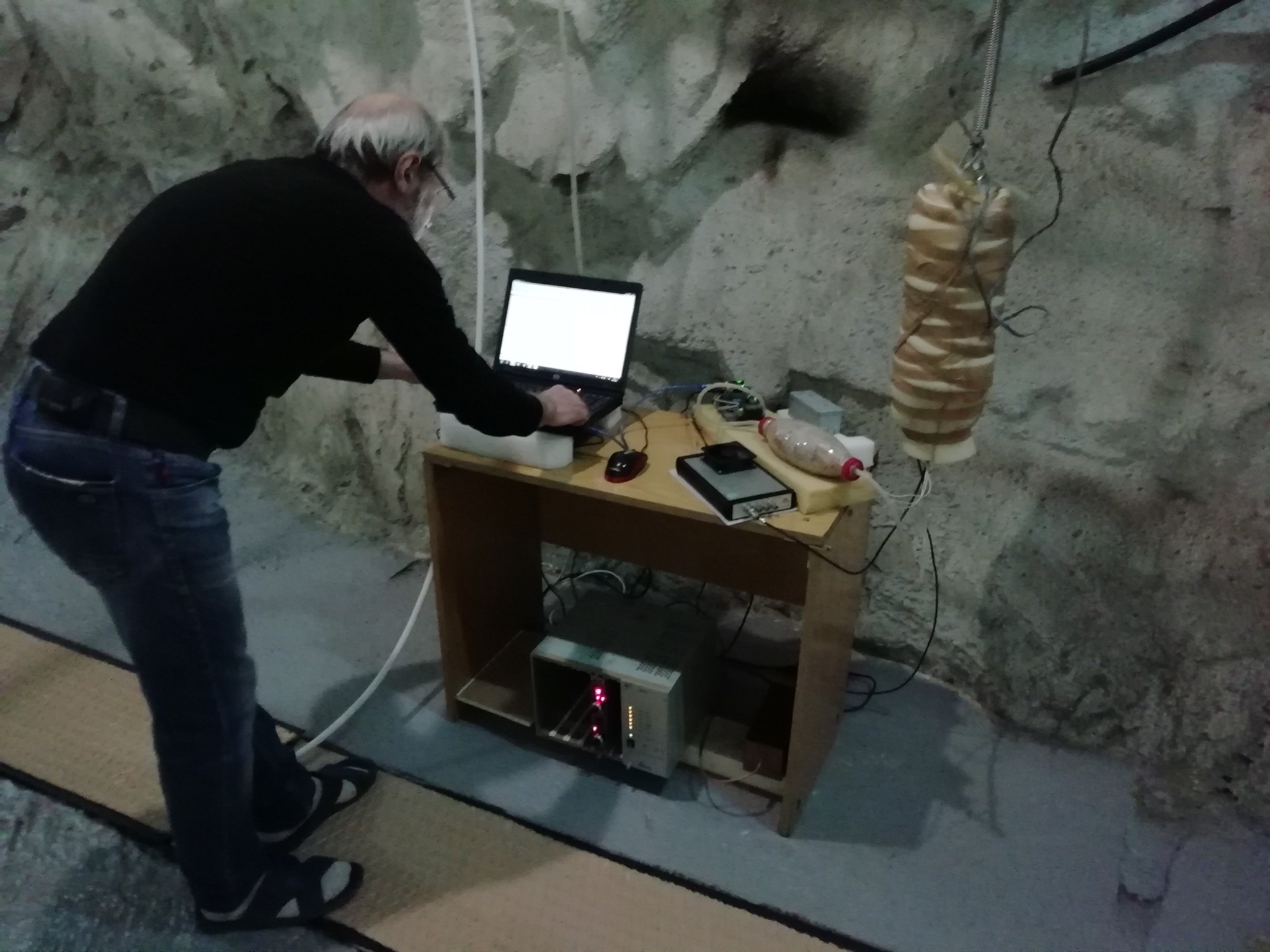 Yuri Mikhailovich Gavrilyuk, a researcher of the Baksan Neutrino Observatory, INR, RAS, measures the radiation background in the DULB-4900 underground low-background laboratory. Photo by Mikhail Zarubin
Yuri Mikhailovich Gavrilyuk, a researcher of the Baksan Neutrino Observatory, INR, RAS, measures the radiation background in the DULB-4900 underground low-background laboratory. Photo by Mikhail Zarubin
Team of authors: Yuri Gavrilyuk (BNO, INR, RAS),
Albert Gangapshev (BNO, INR, RAS), Mikhail Zarubin (DLNP, JINR),
Vladimir Kazalov (BNO, INR, RAS), and Elena Kravchenko (DLNP, JINR)